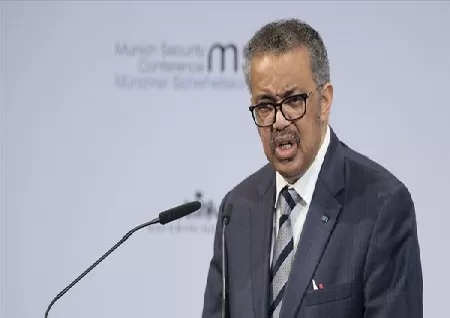Tedros Adhanom Ghebreyesus: WHO chief visits Syria for first time after deadly earthquake

Tedros Adhanom Ghebreyesus, the director-general of the World Health Organization, travelled to earthquake-devastated districts of rebel-held northwest Syria on Wednesday. Tedros visited the government-controlled regions of Aleppo and Damascus the week before the accident, making him the highest-ranking UN representative to do so since the earthquake on February 6. He entered Syria on Wednesday from neighbouring Turkey through the Bab al-Hawa border, according to the reporter, and visited a number of hospitals and a refuge for the homeless. Activists and rescue teams in the rebel-held northwest criticised the UN's tardy reaction after the earthquake, comparing it with the planeloads of humanitarian assistance that have been transported to airports under government control. A total of 258 planes carrying relief, including 129 from the United Arab Emirates, have arrived in regime-controlled areas. On February 12, UN Relief Chief Martin Griffiths acknowledged that the organisation has "so far failed the people in northwest Syria." Since then, a $397 million appeal has been made by the UN to aid earthquake victims in Syria. Since the disaster, 420 trucks carrying UN aid have reportedly entered the rebel-held area, according to the UN. The north and northwest of Syria is home to more than four million people, 90% of whom are dependent on help for survival. On February 9, three days after the earthquake, the first UN assistance convoy entered the region with tents and other supplies for 5,000 people who had been anticipated before the catastrophe.
The only option for supplies to enter without Damascus's consent is through the Bab al-Hawa border, which is operated by the UN and connects northwest Syria to neighbouring Turkey. The bridge is situated in the Idlib area, which Hayat Tahrir al-Sham, a jihadist organisation, governs and which UN representatives seldom visit. On February 12, the head of the WHO said that Assad had indicated a willingness for additional border crossings so that supplies could be sent to earthquake victims in the rebel-held northwest. On February 13, the UN said that Damascus has given it permission to utilise Bab al-Salama and Al-Rai, two more crossings in regions beyond its control, for a period of three months. A new relief convoy arrived on Wednesday, according to an AFP journalist, via Bab al-Salama. After the earthquake, the first UN team to enter rebel-held northwest Syria left Turkey on February 14. It was primarily an evaluation trip led by Sanjana Quazi, head of the UN Office for the Coordination of Humanitarian Affairs in Turkey, and David Carden, deputy regional humanitarian coordinator. More than 50,000 people died in both Turkey and war-torn Syria as a result of the 7.8-magnitude earthquake. According to the Syrian government, 1,414 people died in regions under its control, while 4,537 people, according to Syrian officials with support from Turkey, died in rebel-held territories.
Related queries to this article
- Tedros Adhanom Ghebreyesus
- WHO
- Syria
- World Health Organizatio
- Aleppo
- Damascus
- Turkey
Read more articles and stories on InstaSity Latest News.





